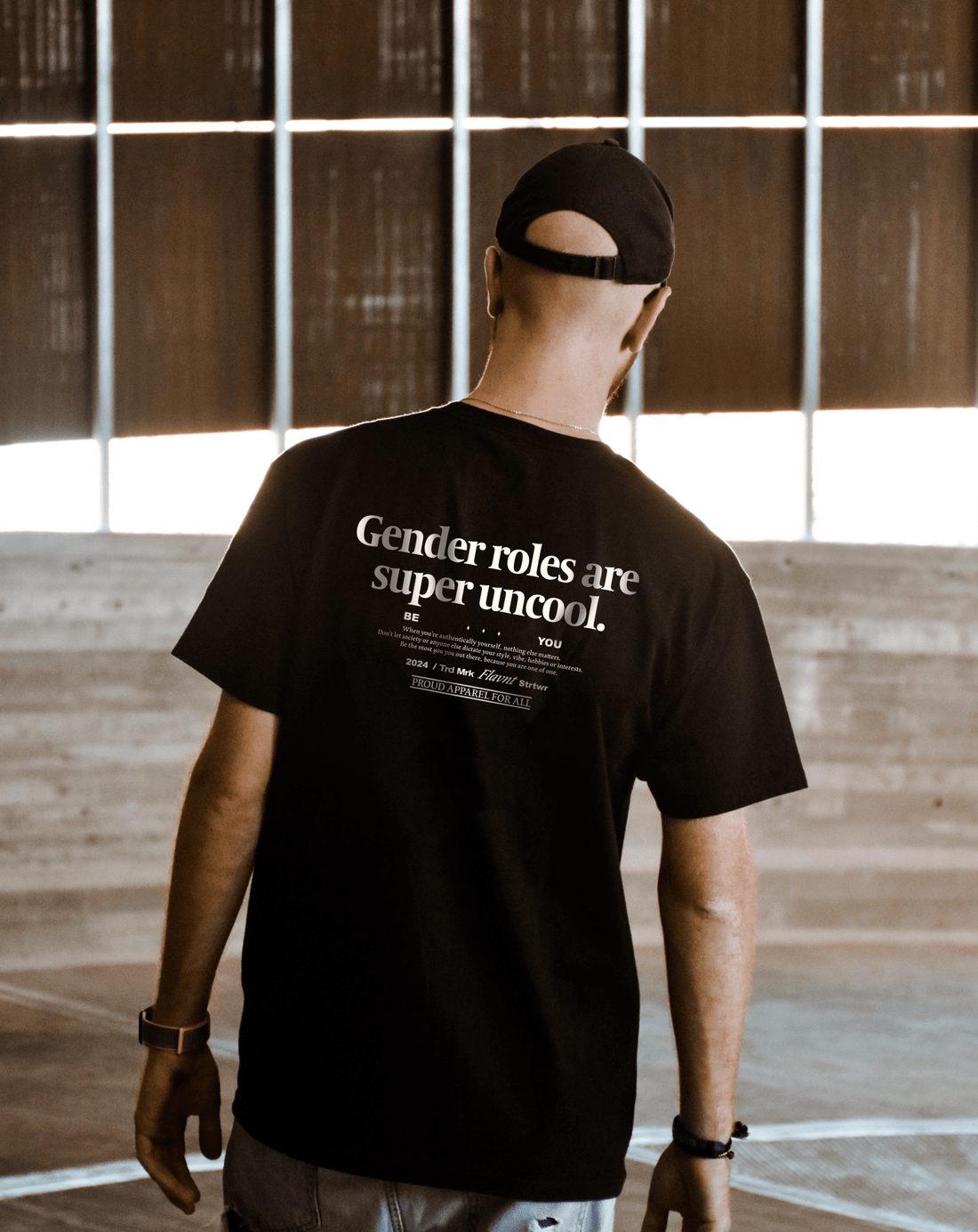A deeper look at where gender roles come from, why they don’t serve us, and how to break free from them — FLAVNT style.
We’ve all heard the rules: boys don’t cry, girls wear pink, men provide, women nurture. These unspoken scripts are called gender roles — and honestly, we think they’re trash.
At FLAVNT, we’ve been pushing back against binary expectations since day one. It’s in our designs, our messaging, and our mission. But gender roles are more than outdated stereotypes — they’re deeply embedded social systems that shape how we see ourselves and each other. And unlearning them is critical to building a world where everyone can thrive.

What Are Gender Roles, Really?
Gender roles are culturally constructed ideas about how people should behave based on their assigned sex at birth. They show up in everything from chores and clothing to careers and emotional expression. You’ve probably encountered gender roles like:
-
Men are strong, logical, dominant
-
Women are emotional, passive, nurturing
-
Boys play with trucks, girls play with dolls
-
Trans and nonbinary folks? Often erased entirely
While these ideas may seem harmless on the surface, they’re limiting at best — and deeply harmful at worst.
Why Gender Roles Hurt Everyone
Here’s the truth: gender roles don’t protect us — they confine us.
-
For cisgender people, gender roles can cause stress, shame, and imposter syndrome when they don’t “measure up.”
-
For trans, nonbinary, and gender-nonconforming folks, these roles invalidate identity and erase experience.
-
For queer people, rigid gender norms often conflict with lived truth, causing alienation or pressure to “perform” a certain way to be taken seriously.
Studies have linked gender role pressure to higher rates of anxiety, depression, and suicidality, especially among LGBTQ+ youth. The mental health effects are real — and they start early.
So when we say gender roles are “uncool,” we mean it literally: they’re outdated, exclusionary, and harmful.
How Gender Roles Show Up in Fashion
Let’s be real: the fashion industry is a hotbed of gendered assumptions. Women’s clothes are “feminine,” tight, or frilly. Men’s are “masculine,” structured, or neutral. And when it comes to queer or genderfluid people? We’re often expected to choose a side or blend in.
At FLAVNT, we’re flipping that script:
-
Our clothes aren’t labeled “men’s” or “women’s”
-
Our binders are designed to help people present as they want — not how society demands
-
Our tees, hats, and slogans are about identity, comfort, and expression — not gender performance
We believe gender expression should be expansive, playful, and affirming — not dictated by the patriarchy or binary fashion standards.
How to Break Free from Gender Roles
Whether you’re questioning, transitioning, parenting a queer kid, or just rethinking your own conditioning — we’ve got some starting points:
-
Challenge your assumptions. Why do you associate strength with men or softness with women?
-
Dress for you. Try clothing, accessories, or hairstyles that feel good — even if they don’t “match” your assigned gender.
-
Consume better media. Follow queer creators, read trans memoirs, support nonbinary artists, and unlearn through stories.
-
Call it out. Gently challenge gendered language or assumptions when you hear them (e.g., “Boys don’t wear pink” — says who?)
-
Raise the next generation better. Let kids explore freely. Normalize all forms of gender expression early and often.
What We’re Doing About It
Brands like FLAVNT, TomboyX, and Wildfang are actively pushing for fashion without gender policing. At FLAVNT, that looks like:
-
Unisex fits made to flatter a wide range of bodies
-
Messaging that centers fluidity, queerness, and personal style
-
Representation that includes trans, nonbinary, and gender-nonconforming models — without tokenizing
Because true liberation doesn’t come from changing who we are to fit a mold — it comes from destroying the mold altogether.

Final Thought: You Get to Decide Who You Are
No chart, checklist, or role should define how you move through the world. You don’t have to fit someone else’s version of masculinity or femininity — or either. You just have to be you.
At FLAVNT, we’ll keep making clothes and content that reflect real people living outside the binary — because that’s where the magic is.

